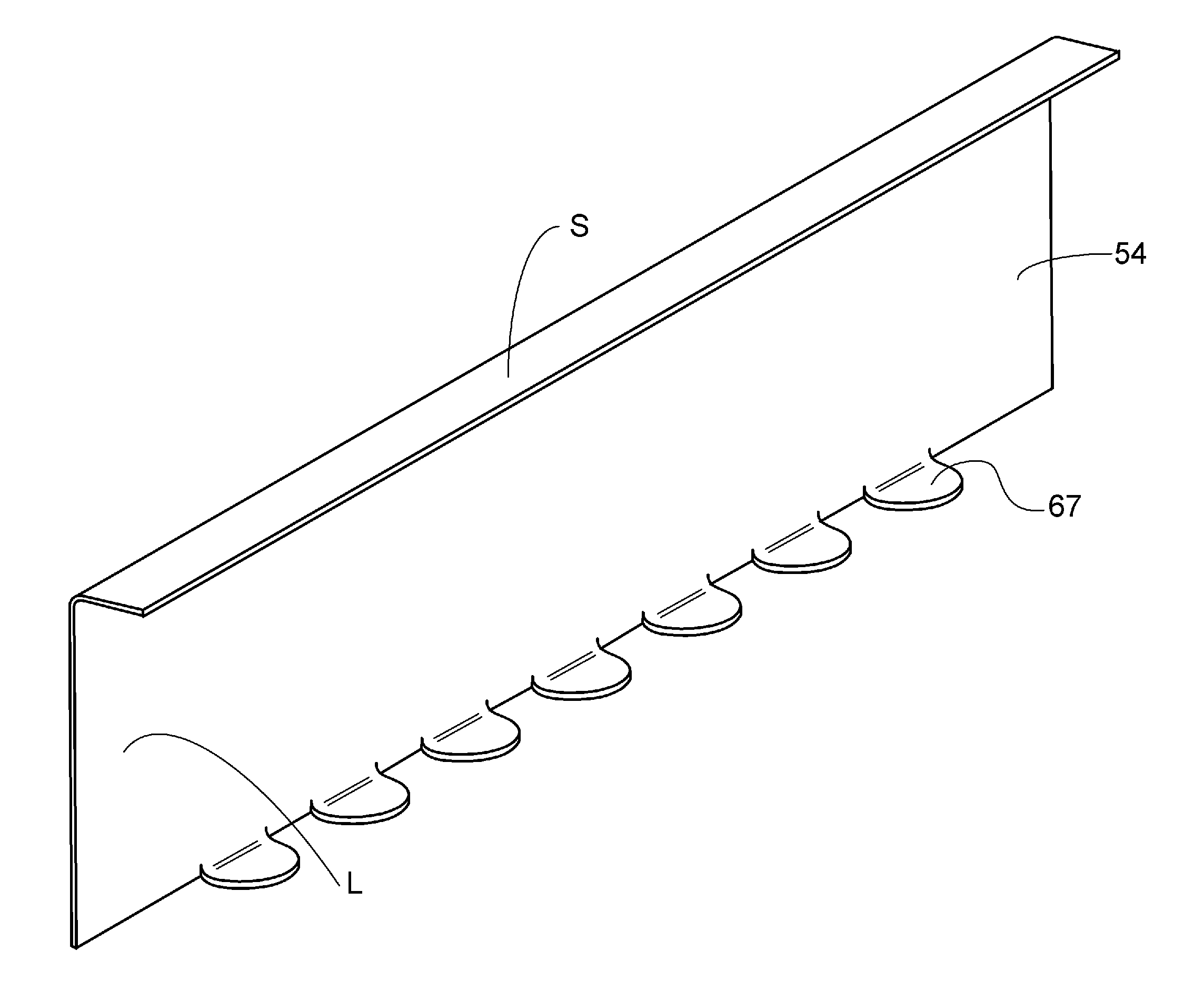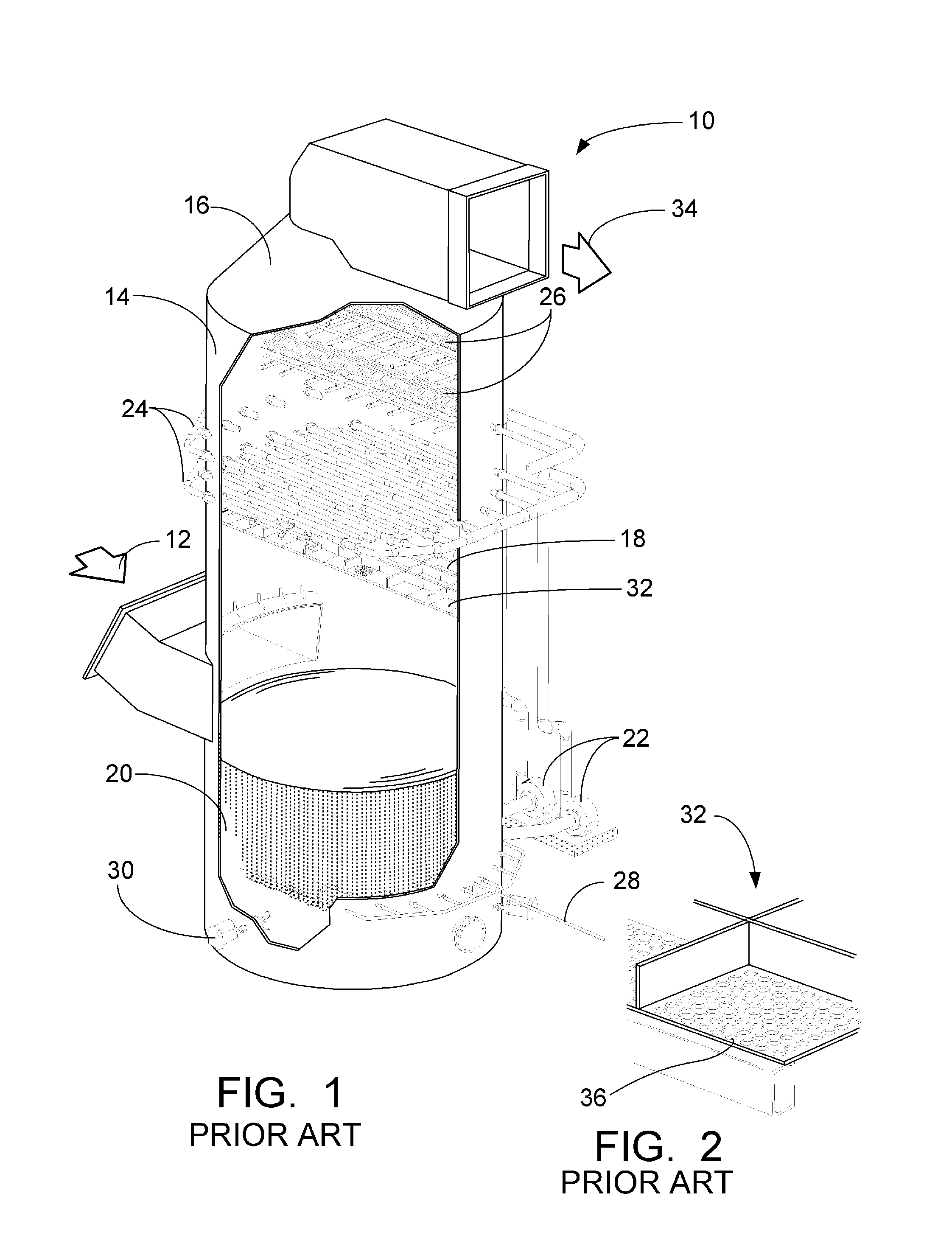Wet scrubber tray
a scrubber tray and wet technology, applied in the direction of machines/engines, combustion air/fuel air treatment, separation processes, etc., can solve the problems of reducing the resistance of side stiffeners to vibration, wasting materials, etc., and achieves the effect of increasing the resistance to vibration-induced cracking, simple design and rugged construction
- Summary
- Abstract
- Description
- Claims
- Application Information
AI Technical Summary
Benefits of technology
Problems solved by technology
Method used
Image
Examples
Embodiment Construction
[0054]The natural circular frequency of a single degree of freedom component can generally be represented by the relationship:
ωn=√{square root over (k,m)} (1)
[0055]where: ωn=circular frequency[0056]k=stiffness[0057]m=mass
[0058]If the observed tray cracking is vibration-induced, the amplitude of the portions undergoing vibration is such that the stresses are exceeding the endurance limit, and the failures are due to fatigue. One way to reduce the amplitude of any component undergoing vibration at a given frequency is to increase the natural frequency of the component. Based upon the above relationship, increasing the stiffness-to-mass ratio of the component will increase the natural frequency. Thus, if the driving forces remain at the same frequency, stiffening the trays will reduce their likelihood to vibrate, thereby reducing the amplitude of vibration and the resulting flexural stresses experienced. The present invention thus provides several ways to increase the stiffness of the...
PUM
| Property | Measurement | Unit |
|---|---|---|
| angle | aaaaa | aaaaa |
| mass ratio | aaaaa | aaaaa |
| height | aaaaa | aaaaa |
Abstract
Description
Claims
Application Information
 Login to View More
Login to View More - R&D
- Intellectual Property
- Life Sciences
- Materials
- Tech Scout
- Unparalleled Data Quality
- Higher Quality Content
- 60% Fewer Hallucinations
Browse by: Latest US Patents, China's latest patents, Technical Efficacy Thesaurus, Application Domain, Technology Topic, Popular Technical Reports.
© 2025 PatSnap. All rights reserved.Legal|Privacy policy|Modern Slavery Act Transparency Statement|Sitemap|About US| Contact US: help@patsnap.com



